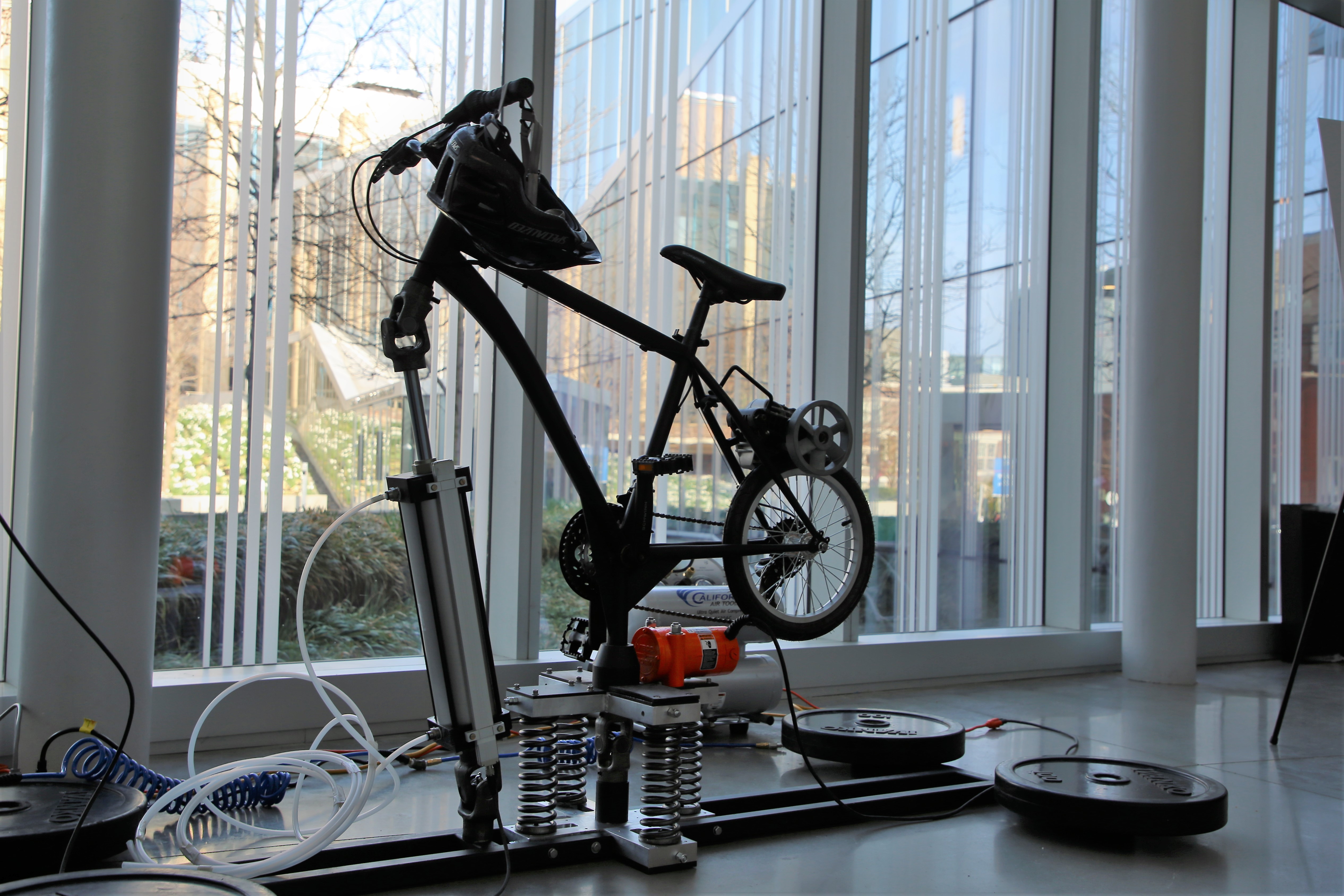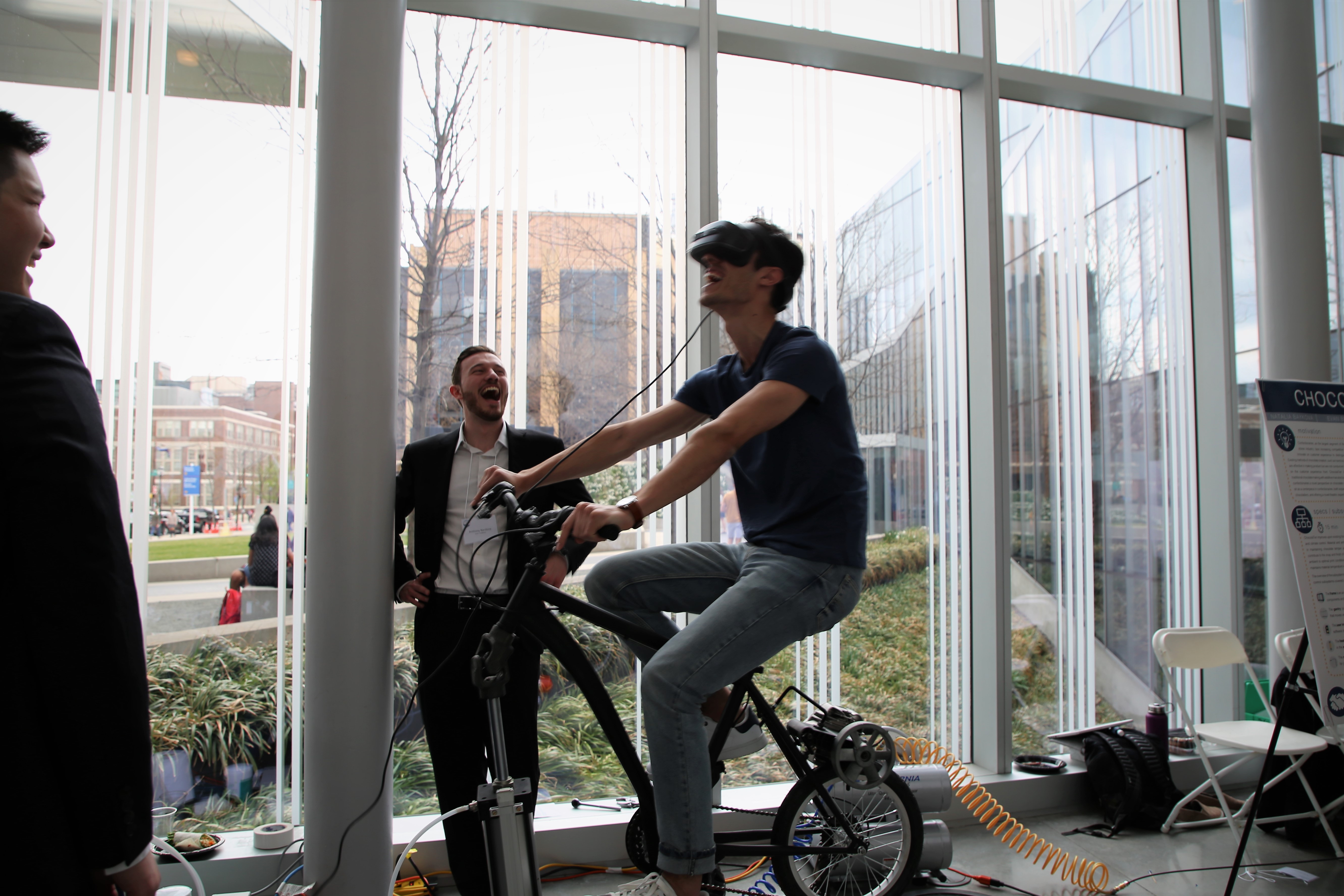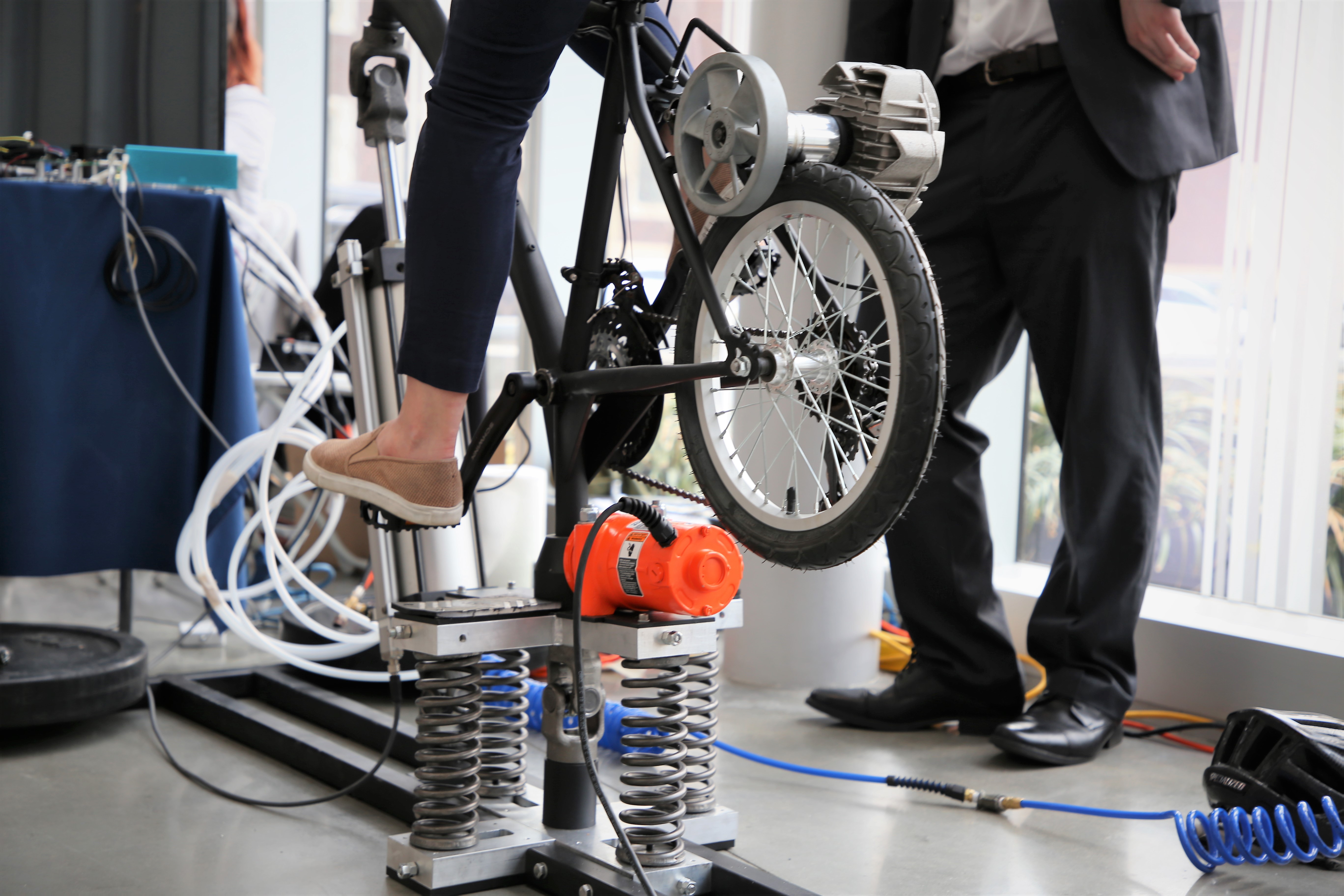TrailBlazer is a stationary mountain bike simulator that aims to emulate the sensations of specifically downhill mountain biking, something not yet commercially available in other stationary bikes.
The pitch system consists of active and passive portions, the active portion being actuated by a pneumatic cylinder and the passive portion supporting the load of the mechanism with large springs. The passive portion is the same design used to enable the passive roll system. The passive roll system allows the user to lean side to side, which is a common movement performed in downhill mountain biking for cornering. The vibration subsystem is actuated by an AC eccentric rotating mass motor. The pedal resistance subsystem provides the user with a sense of work and motion; this subsystem is comprised of a modified off-the-shelf-fluidic pedal resistance system. The base frame consists of square steel tubing and prevents the mechanism from tipping while in use.
For controlling the actuation and implementing the visual components, the control system architecture was selected according to what instruments and methods were compatible with the critical mechanical systems, in particular the pneumatic cylinder. After down-selection, the final design included a servo pneumatic positioning system, a linear Hall effect magnetoresistive sensor, an analog circuit with operational amplifiers, an Arduino, and a laptop. The visual components of the final design interfaced with the laptop, with a MATLAB script initiating the display of a preset video in time with the commanded pitch dataset.




Team (Left to Right): Andres Zambrano, Emma Lee, Anthony Nardone, Christopher Mok, Nicholas McKnight